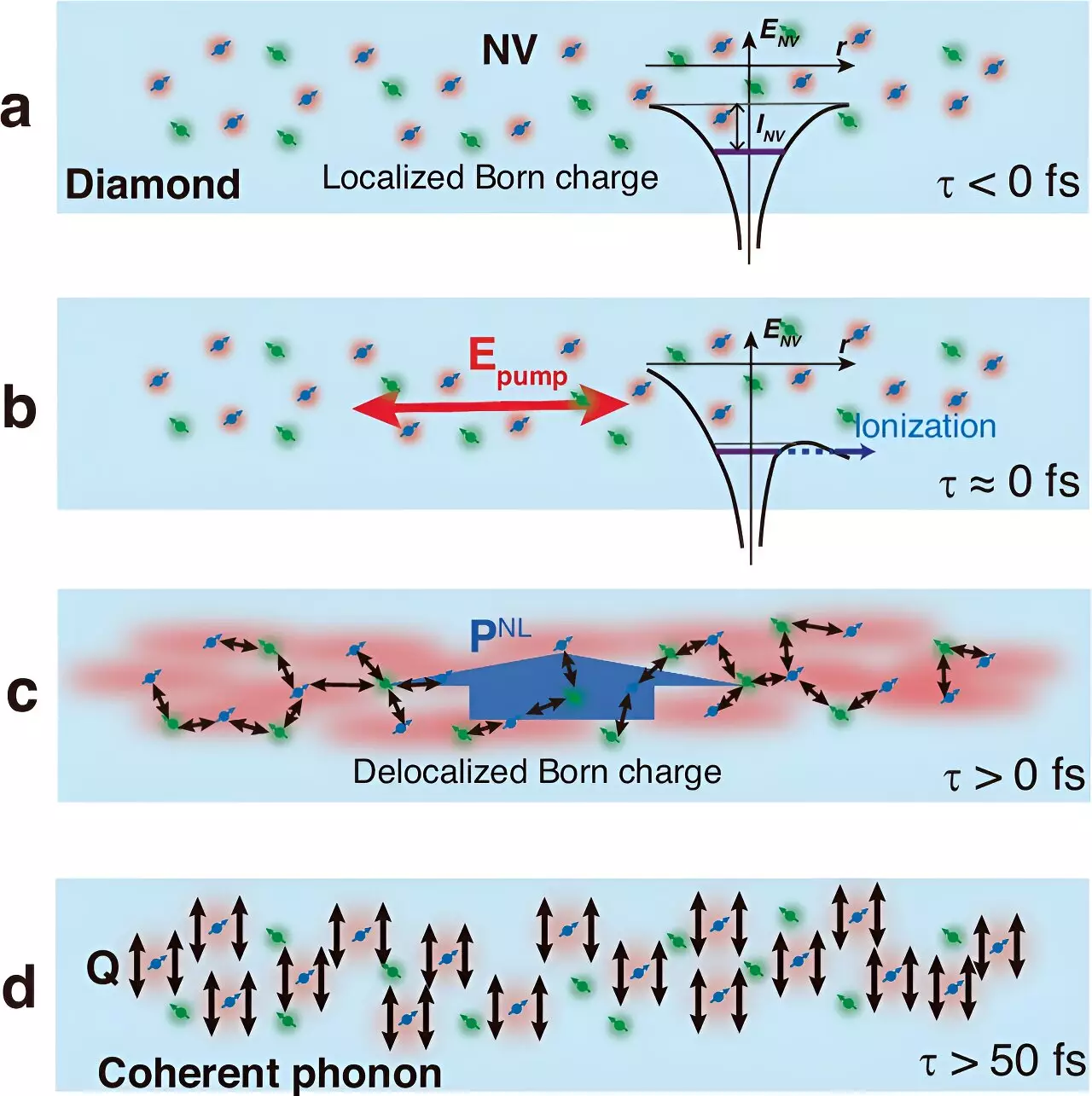A team of researchers from the University of Tsukuba has made significant strides in understanding the intricate behavior of polarons within diamond crystals, particularly focusing on the fascinating role of color centers. By utilizing advanced laser technology, the study paves the way for new applications in quantum sensing and materials science. The research, detailed in Nature Communications, sheds light on how the electrons and lattice vibrations interact—an area that has previously remained nebulous.
At the heart of this investigation is the nitrogen-vacancy (N-V) center, a well-known defect in diamond crystals formed when nitrogen atoms replace carbon atoms adjacent to a vacancy. These centers are pivotal in defining the coloration of diamonds and are characterized by their sensitivity to external environmental parameters, such as magnetic fields and temperature fluctuations. Such sensitivity arises from their ability to modify their quantum states, which has made N-V centers a focal point for developing high-resolution sensors.
To probe the characteristics of the lattice vibrations surrounding the N-V centers, researchers employed ultrafast laser pulses on nanosheets containing carefully controlled densities of these centers. This meticulous approach revealed an impressive amplification of lattice vibrations—specifically, a striking increase by nearly 13 times. This notable effect was particularly intriguing given the low density of the N-V centers, suggesting that even sparse defects can significantly affect lattice dynamics.
Furthermore, the researchers conducted first-principles calculations to analyze the charge states of the N-V centers, uncovering a non-uniform distribution of charges. Such findings imply complex interactions within the diamond lattice, which could alter the expected behaviors of polarons—a quasiparticle formed from an electron and its associated lattice distortion.
Historically, the concept of Fröhlich polarons—a particular type of polaron—has been debated within the context of diamond materials. The speculation was that these polarons did not exist in diamonds, yet the current study contradicts this assumption by demonstrating their presence derived from the N-V centers in the investigated nanosheets. This revelation not only revitalizes theoretical discussions surrounding polarons in solid-state physics but also raises profound implications for the future of quantum technologies.
The ability to manipulate and understand the polarons within diamond color centers opens exciting avenues for next-generation quantum sensors. As the study highlights the intricate connections between electron behavior and lattice vibrations, it signals a promising pathway for enhancing the sensitivity and efficiency of quantum measurement devices. While the research showcases a significant advance in our comprehension of material properties, it also calls for further exploration into the complexities of polaron interactions and their potential applications in various scientific fields.
The research conducted by the University of Tsukuba not only enhances our understanding of polaron behavior in diamond crystals but also signifies a considerable step towards harnessing these properties for practical quantum sensing technologies. The interaction between quantum states and lattice dynamics holds tremendous promise, shaping the future landscape of materials science and quantum engineering.



Leave a Reply